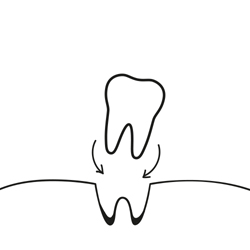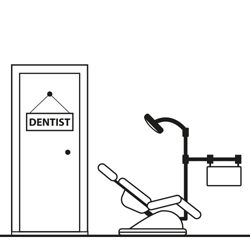Your child has a knocked out tooth - what should you do next? Dr Tan Wee Kiat, Senior Consultant from the Department of Restorative Dentistry at National Dental Centre Singapore shares tips on how to cope with avulsion.
Last week a parent presented at our clinic with a 7 year old child. Both were visibly distraught.
In her hand, she held a permanent tooth wrapped in gauze. Her son had knocked out (avulsed) his front tooth in school. What is the probability of your child injuring his front teeth like this?

Photo credit: Dr Bien Lai, National Dental Centre Singapore
"Avulsions constitute 1–16% of all traumatic dental injuries to permanent anterior teeth and most often involves the maxillary central incisor. Although avulsion may occur at any age, the most common age for avulsion of permanent dentition is between 8–12 years old," says Dr Tan Wee Kiat, Senior Consultant from The
Department of Restorative Dentistry (Paediatric Dentistry Unit) at
National Dental Centre Singapore, a member of the
SingHealth group.
If your child is a boy, he is more likely to injure his front teeth. If he has protruding front teeth, he is 3.4 times more likely to injure one of them. Falls are the most common cause of avulsion. If he is involved in a bicycle accident, the odds of avulsion is 3 fold compared to falls from other causes.
Many studies worldwide show a lack of knowledge in parents, teachers and secondary students of what to do in such a dental emergency. Yet knowing what to do could save your child’s tooth. Avulsion is one of the most severe type of dental injuries and and its clinical prognosis is very contingent on first-aid measures and agility to seek dental care.

Photo credit: Dr Bien Lai, National Dental Centre Singapore
Permanent Tooth Avulsion: 9 Things to Do
Here is a step by step guide of what to do if you find yourself in such an emergency.
Keep calm
Upset parents result in an even more upset child. If the child is crying, then at least you know that the ABCs are OK. Airway, Breathing, Circulation.
Quick assessment of injuries outside the mouth
Are there any cuts, sprains, fractures?
Quick look into the mouth.
Gently pry open lips to have a good look at the front teeth. If there is a socket where the tooth was, then you can presume it was avulsed. Ascertain that this is a permanent tooth and not the primary or milk tooth. The socket will be bigger for the former, and parents usually remember when the baby tooth had already changed for the permanent. Look for the permanent tooth. It will usually be around the scene of the accident. If the child is 5yrs and below, it is probably a baby tooth - do not waste time looking for it. Bring your child to the nearest accident and emergency unit or dental clinic.
Can the tooth be reimplanted?
The clinical consideration in avulsed permanent teeth is can we reimplant? (put it back into the socket) Two factors will determine if this tooth will “take” and reattach back to the cells in the socket.
- The length of time out of the mouth – the shorter period, the better.
- How the tooth was managed, especially the root part, which needs to go into the socket. Emergency treatment aims at keeping the cells on the root alive, i.e. not letting it dry out and not killing the cells by handling, rubbing or scrubbing the root.
- The best place for this tooth is to be back in the socket but parents are queasy when asked to put the tooth back, and sometimes parents have put the tooth back in a different orientation. So the next best thing is to
bring the tooth to the dentist as soon as possible.
And here are some must DOs:
DO – gently rinse the tooth in tap running water
(10s) if it is coated with soil and dirt, but hold it on the crown, avoid touching the root.DO – put the tooth in a medium such as milk, or saline.
Available in the market are solutions called “Save a tooth” which parents can keep for just this sort of emergencies. No milk? Place the tooth in the mouth between the cheek and gums.DO – rush to the nearest clinic within 2 hours
and state to the clerk that your child has knocked out a tooth, so you can be processed speedily and the dentist informed. Parents have sat quietly in the waiting room, not informing anyone.DO know where your nearest emergency room is, where there is a dentist in attendance.
You will waste valuable time waiting at emergencies where they have to call a dentist to come from another hospital. For the convenience of parents, we have come up with a guide:- After office hours – A and E at SGH or NUH or KKH Expedite yourself at triage by telling them you have an avulsed tooth.
- During office hours – Your nearest dental clinic.
Though you cannot prevent accidents you can certainly equip yourself to manage one.
|
Step 1: | Images: |
Rinse tooth holding crown under tap water
(Plug sink) |

|
Step 2 (Do one of the following): |
|
Put tooth back in socket
| 
|
|
Put in milk or saline
| 
|
|
Put in mouth between gums and cheek
| 
|
|
Step 3: | |
|
Go to your nearest dentist of A & E if after office hours. | 
|
Ref: N18
